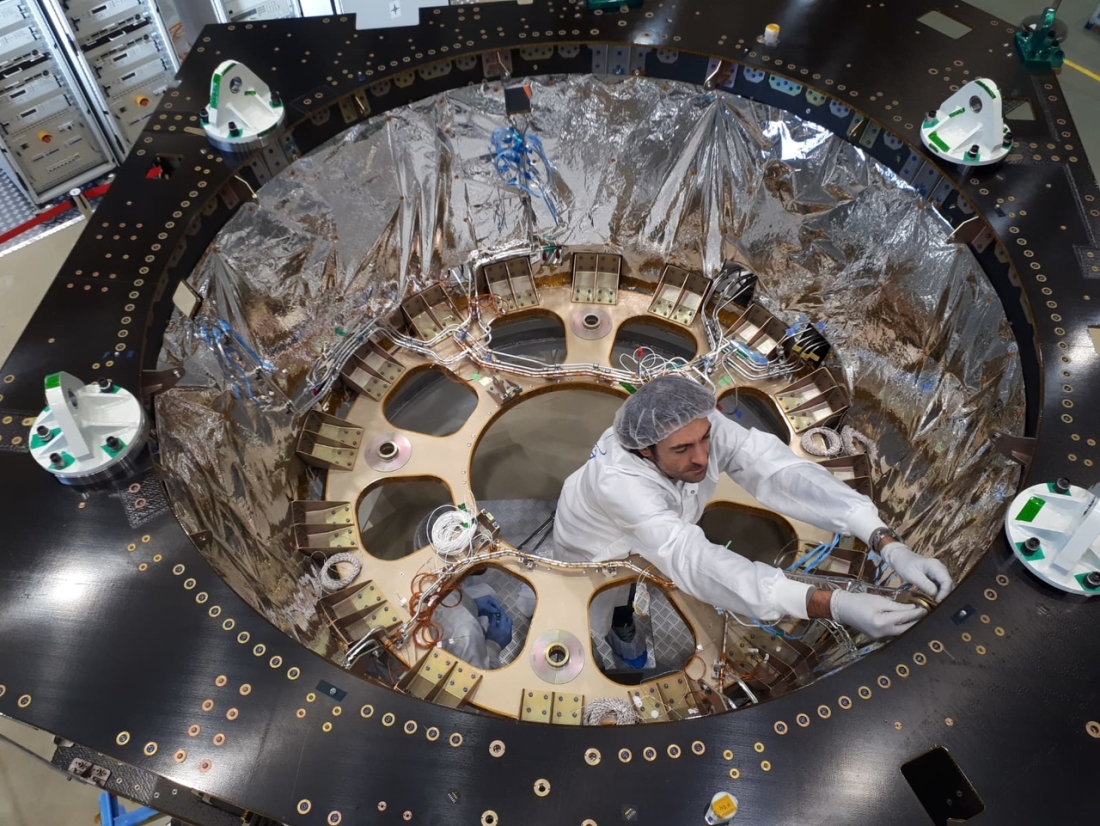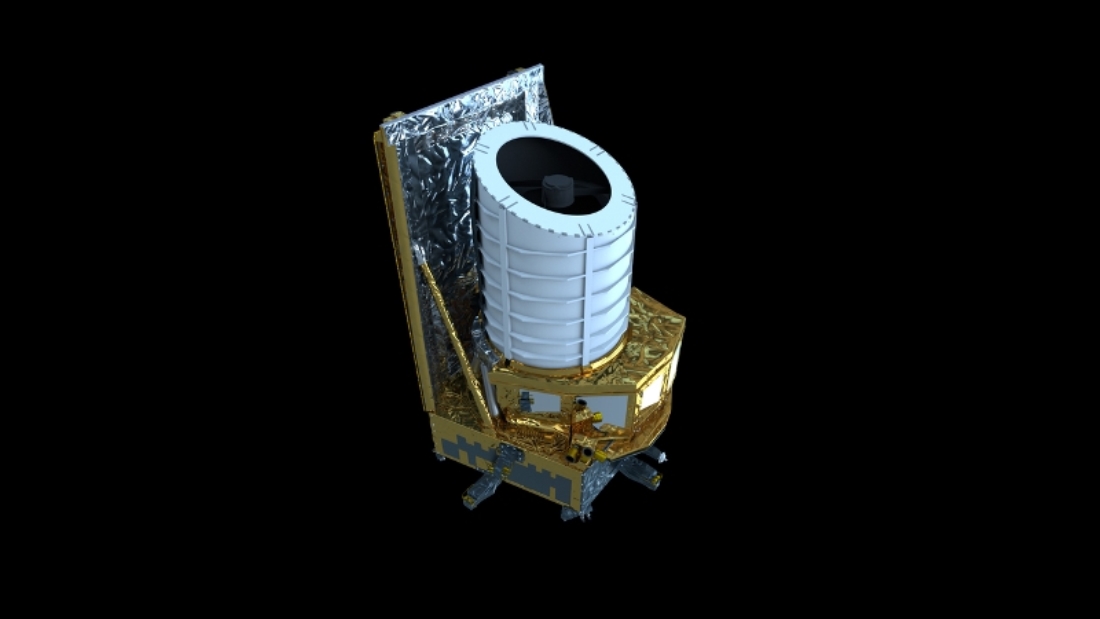What’s up with Euclid, the explorer of the “dark side” of the Universe?
With launch scheduled in 2022, ESA's Euclid mission is making great progress on the hardware and on readying for the science phase.
New milestone in sight
The Euclid Structural Thermal Module (STM) is taking its final shape before undergoing thermo-mechanical tests. The Euclid service module (SVM), payload module (PLM), sunshield (SSH) and high-gain antenna (HGA) have been successfully mated in our clean rooms.

What’s next?
The STM will undergo full thermal and mechanical qualification tests in the coming months, paving the way for protoflight model (PFM) activities. In the meantime, integration and testing of the PFM avionics and the PLM have already started in readiness for shipping the mission’s scientific instruments—the visible wavelength camera (VIS) and the near-infrared camera/spectrometer (NISP)—before the end of this year.
A universal recipe for success

Euclid is a medium-class mission of ESA's Cosmic Vision program to investigate the expansion of our Universe over the past ten billion years, probing cosmic epochs from before when expansion started to accelerate and all the way to the present. To this end, Euclid will survey galaxies at a range of distances from Earth, over an area of the sky covering more than 35% of the celestial sphere. Thales Alenia Space is prime contractor for the construction of the satellite, which features a 1.2-m-diameter telescope, a 4.2-m x 2.5-m sunshield solar array, a 70-cm high-gain antenna and two scientific instruments: a visible-wavelength camera (VIS) and a near-infrared camera/spectrometer (NISP), both developed by the Euclid Consortium.
The Euclid Consortium comprises scientists from 13 European countries: Austria, Denmark, France, Finland, Germany, Italy, Netherlands, Norway, Spain, Switzerland, Portugal, Romania and the UK. It also includes a U.S. team of scientists from NASA.
Photos copyrights: ©Thales Alenia Space, Esa/ATG Medialab, Euclid Consortium (image); NASA/ESA, Hubble, CANDELS, Koekemoer et al. 2011, Grogin et al. 2011 (data)